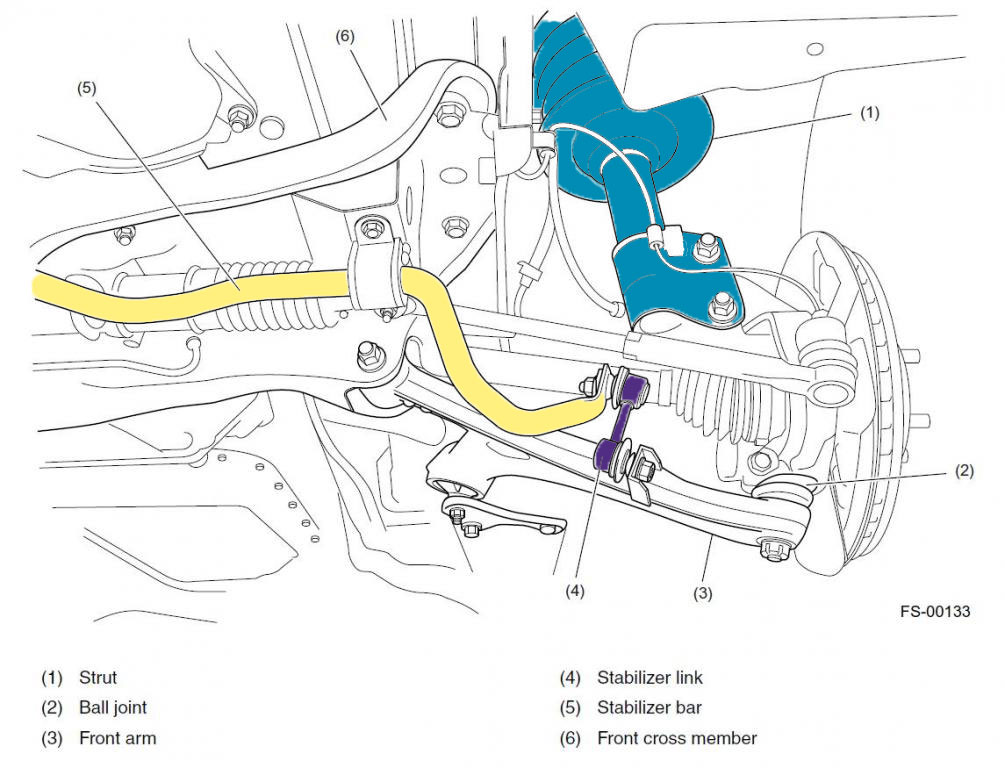

The Subaru Impreza Sport comes with 5.9" ground clearance. It uses a front MacPherson strut based design, and a multi-link rear suspension.
The GP chassis (Impreza and XV Crosstrek) share a similar suspension design, the XV using lifted components.
The subframes and unibody shares attach (hard) points similar with Subaru's GH narrow body hatchback chassis found on 2008-2010 WRX and 3rd Generation Imprezas. Therefore aftermarket support, like coil-overs, can be used from 2008+ WRX GH designed components.
Stock front sway bars are 22mm, (24mm on the crosstrek) and on the rear a 16mm. Base model Imprezas do not include a rear sway bar.
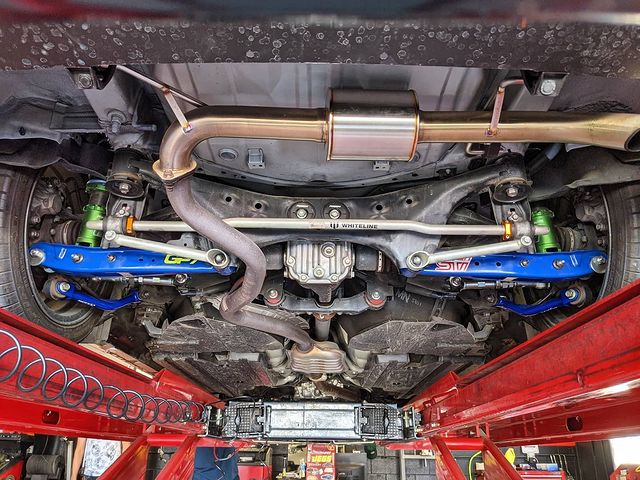
It is often stated that suspension can transform a car. This statement couldn't be more true with the Impreza. While the suspension in stock form is soft and compliant, it can be tuned to become very predictable in handling and agility and produce a more direct power transfer to the wheels.
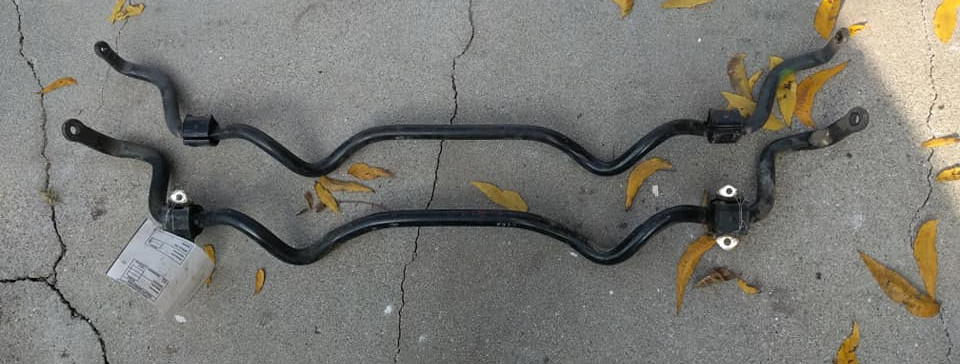
Keeping the stock springs and struts, the first handling modification on any ones list should be a thicker rear sway bar. Most of the cars come with a 16mm rear sway bar which produces a significant roll in corners as well as feelings of lazy and under steer. The 19/20mm STI rear sway bar is an inexpensive modification that can help reduce body roll and increase cornering ability even with stock suspension.
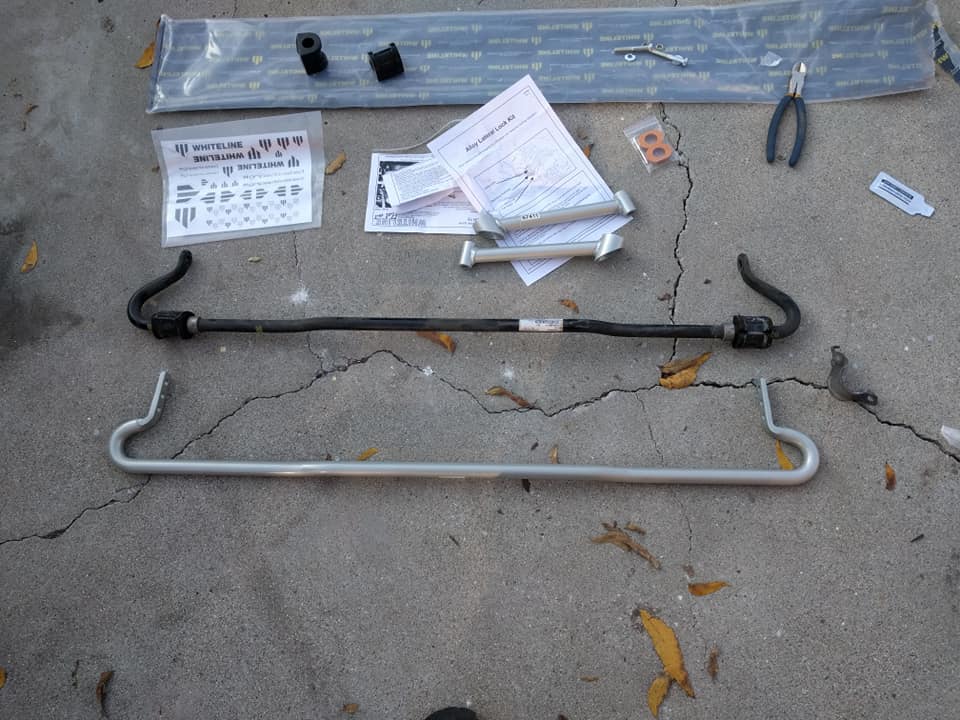
Thicker REAR sway bars help tune out understeer (promote oversteer), while a thicker front sway bar increase understeer (reduces oversteer). I've found that a 2mm difference between front and rear is a good balance. I've settled on is 24mm front (from the crosstrek) and a 22mm rear for a neutral balance.
Lowering the car (withing reason) can increase cornering ability by lowering the center of gravity. This can be achieved by the use of lowering springs (a good low-maintenance choice for salty winter regions) or adjustable coil-over suspension. Coupled with the low CoG boxer engine, lowering the car will have a compound effect.
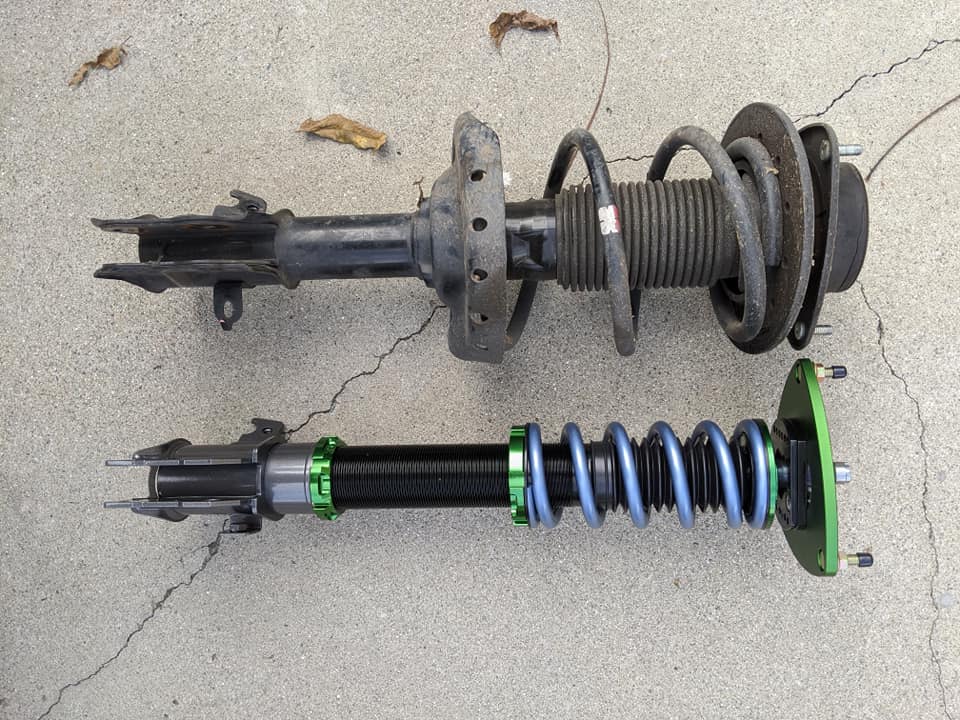
I opted for Fortune Auto 500 coil-overs (For the GH chassis). They have 8k/8k Swift springs and radial bearings. These come with adjustable front camber aluminum top plates which increase driver feedback, at the expense of more NVH (noise harshness and vibration). Adding coil-overs with ride-height adjustability has been very fun with marked improvement in agility though corners.
After lowering you car, consider adjustable rear lower control arms to bring rear camber back into spec. An alignment is most certainly needed. The tuner can then revisit the front and sway bars to achieve the desired steering/roll balance.
On my build, the rear suspension has been upgraded to take advantage of polyurethane bushings and spherical ball joints. This helps to maximize driveline transmission efficiency and remove unwanted slop. The rear multi-link suspension comes alive when stiffer bushing are used. Power transfer is more direct, torque to the rear wheels increases as a result.
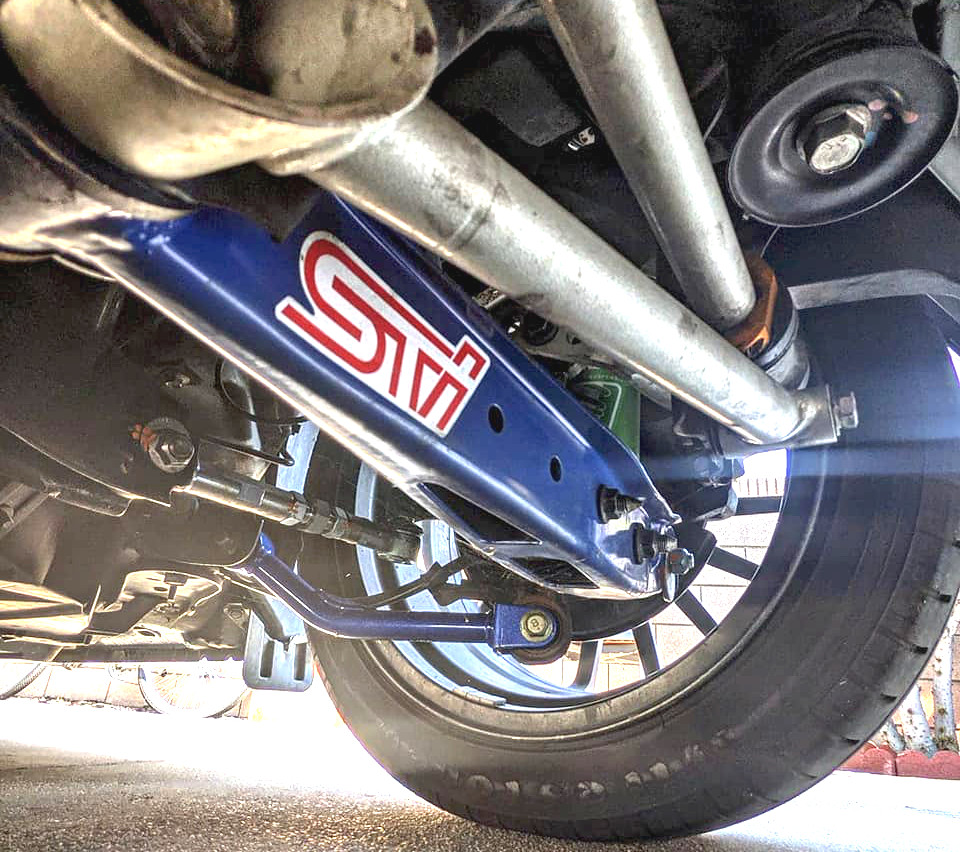
Most noticeable changes were the trailing arms. Beefier toe links reduce geometry deflection in heavy corners. The adjustable lower control arms correct any added camber when lowering the car.
Additionally, to gain more suspension droop (downward travel) you may add helper springs to push the damper lower. This helps retain ride-height, but allows the damper to extend further, when unweighted. Good for heavy cornering, or entering steep driveways
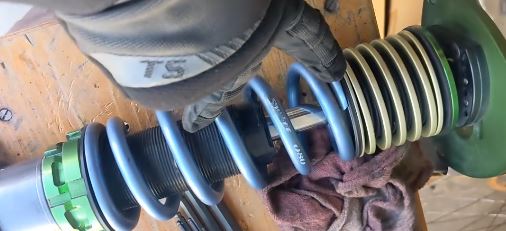
My alignment is:
Suspension and handling is something that has many components to it. By adding a new aftermarket part, you can tune your cars handling. There are many more options for suspension, bracing and handling. The point is that each upgrade is an incremental increase in handling performance. The tuner can focus much attention in this area. This will set your car apart from many vehicles and modifications which focus primarily on power.
Cornering and agility are already a strength of this platform, adding better suspension, bracing and handling components can elevate ones driving experience.
Back to Subaru Impreza Tuner